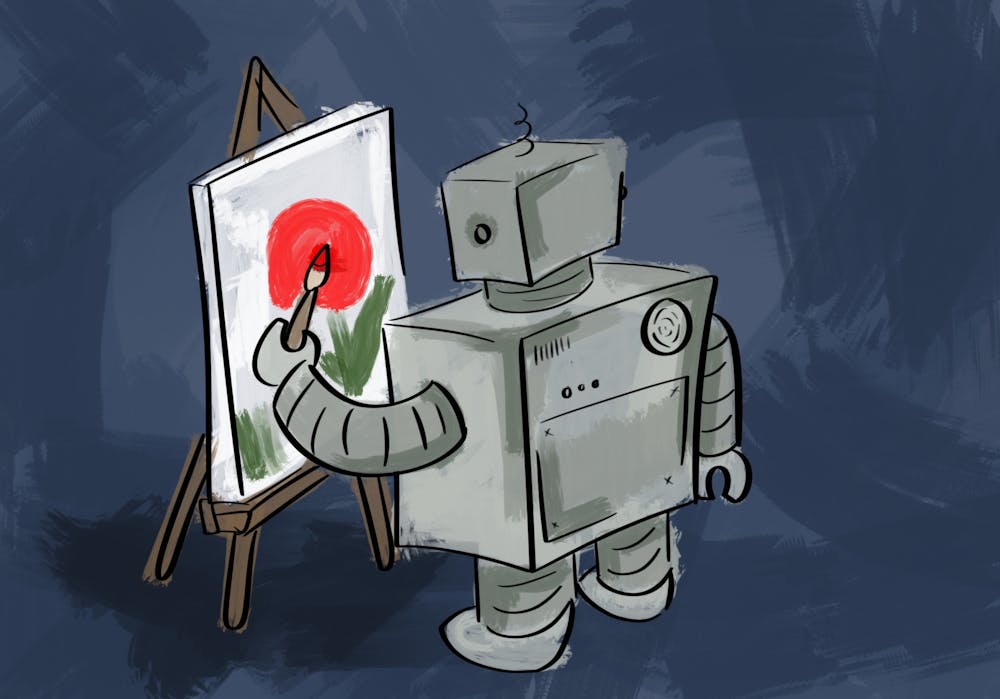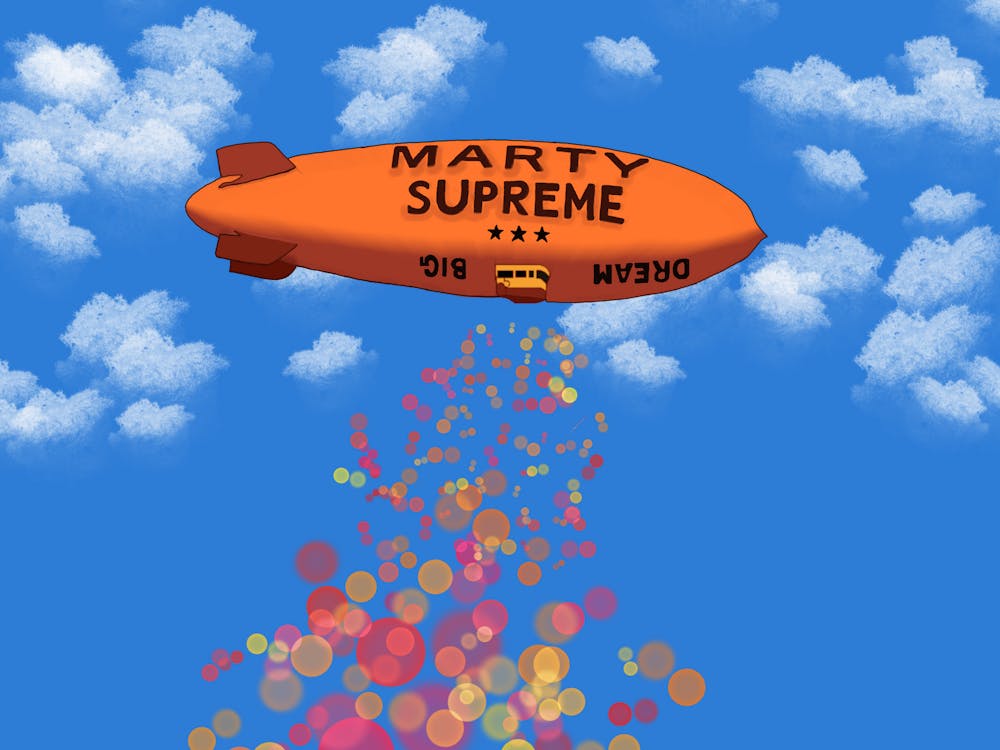In the wake of the Intelligence Revolution, societies around the world are beginning to witness and acclimate to the substantial rise of artificial intelligence technologies. Standing on the precipice of great controversy, AI can and has been used to mimic the disciplines that compose the very fabrics of living within a larger society. From writing to music and visual art, AI has succeeded in raising questions about plagiarism, privacy, autonomy and the overall legitimacy of AI-generated artistic media amidst its rise.
Associate Chair of Media Studies and Prof. Kevin Driscoll, who specializes in the complex interactions between technology and communication, said that what makes recent developments in AI most notable today is the technology’s accessibility to anyone with an internet connection.
In the same manner photography grew from an unknown science into a discipline of fine art, Driscoll said that AI has the potential to prove itself as a legitimate form of artistic expression.
“If we look at the last 25 years of art making, I think we’d see people experimenting with all manners of new computer-enabled techniques and technologies,” Driscoll said. “For the artists who are comfortable adopting these new systems, or who are willing to be uncomfortable adopting them, generative AI becomes another tool in their studio for exploring and expressing new ideas.”
As newly birthed mediums such as AI-generated music and art continue to develop, so do discussions surrounding our perception of what constitutes art and artistic originality, as well as accompanying issues regarding AI’s interference with autonomy.
This is because, despite the advanced capabilities of all AI software, the functionality of AI-generated art is often dependent on the existing body of artwork, music and content that have already been produced and made available to the public. For instance, AI-generated audio remixes pull from the online catalog of published songs, while most AI imagery creates an output by converging stylistic elements from all the online artwork available.
In regards to autonomy, AI applications such as Murf and AudioCraft allow users to create digitized remixes of certain songs by swapping the existing vocal track with the fabrication of another artists’ voice. An example is seen with the viral AI-generated cover of “Skyfall,” the vocals of which are intended to mimic that of Lana Del Rey while adhering to the lyrical genius of original artist Adele.
According to Driscoll, examples of the rise of AI for musical rhetoric such as this could potentially cause the unrightful use of an artist’s voice for self-serving purposes such as commercialization. Ultimately, Driscoll claims that generative AI audios spark a debate around the violation of a celebrity’s autonomy and right to consent to having their voice used.
Associate Media Studies Prof. Jack Hamilton added that generative AI is not only a matter of respecting the artist, but the fans.
“People are into the artists that they’re into for reasons other than just how they sound,” Hamilton said. “We’re interested in musicians because of the way they interpret works and the personal expression that they bring to it.”
With optic-orientated prospects like Midjourney, visual imagery software applications can generate complex imagery based on the user’s input of a few words, often employed for the purposes of fanart. Beyond the purposes of fanart, visual imagery AI has faced heightened scrutiny following its use by a game designer who found success in an art competition by submitting a piece of art generated by Midjourney.
In specific relation to imagery and visual depictions of art, Hamilton believes there is a certain subjectivity that is inherent to perceiving AI imagery as art.
“I think people don’t accept AI at the moment because it’s not very good,” Hamilton said. “The returns that we’ve seen from AI being used in capacities, like making visual art or even writing, aren’t all that impressive.”
Driscoll expanded on the idea that AI imagery lacks credibility by pointing out that AI art is a product of software, arguing that the most widely accepted perception of artwork are products of raw talents that an individual is born with or acquires through trial and error.
“In this case, we can imagine what the terms of the disagreement are,” Driscoll said. “We value some amount of labor and work and craft or skill that is developed over time.”
Looking into how AI will be perceived, used and accepted as a whole in the future, Driscoll believes its legitimacy is dependent on the evolution of status culture — how people, as a society, assign high and low status to the art and culture they engage with.
However, whether it's through the auditory art people listen to or the abstract portrayal of the human imagination with technology, AI remains a potential stepping stone to the evolution of artistic media and encourages an ongoing flow of debate surrounding its use. Regardless, its applications in the future play a critical role in challenging how the larger society perceives what art truly is amidst the wonders of the Intelligence Revolution.







